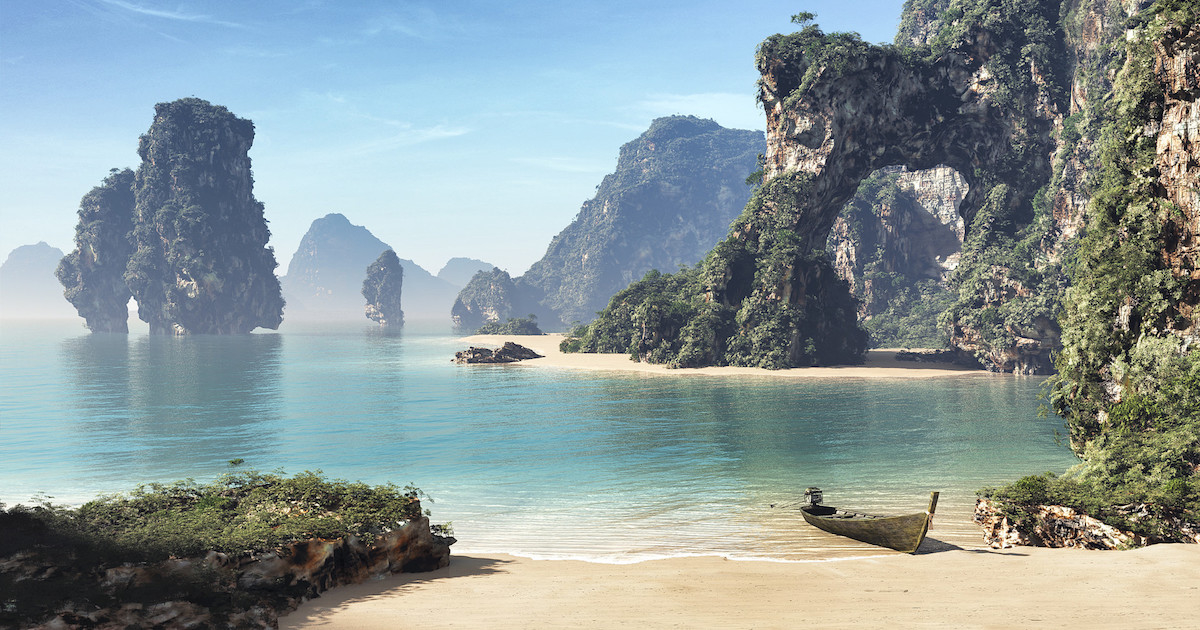Announcement
Collapse
No announcement yet.
Monolith Sculpting
Collapse
X
-
yoooo sup. This semester was kind of crazy eh
I have some thoughts about the presentation for something like a monolith. Some ideas that I'm seeing in the reference images. I saw this thread kind of late toward Finals it wasn't the best time to build graphics for something like a crit but it's winter break now so.
Dom saw this thread too and I think he was waiting to see what you'd sculpt. He would be the one to poke about the zbrush technical aspect, and my input is purely about the presentation, conceptually I guess.
Horizon line = eye level
If you see the horizon in an image, that tells you the height of the viewer in relation to the environment. sooo that means these pictures were taken from about 30 feet above the water.
In this image the camera is looking down and there's a different perspective. It goes from two-point to three-point perspective, and I like how it just looks more dynamic. Compared to the tropical scenes where the rock formation is straight-on and within eye level, as if it is posing for a portrait.
What I really like about it though is the Atmospheric Perspective. Atmospheric perspective is basically everything going on in the back half of the shot. (If this was a project of mine I would expand what's happening in the top right corner to fill more of the background because I think it's really cool)
and what's happening in this image
As you go further into the distance, there's more atmosphere between the subject and the viewer. The two rules for the change in color are:
-reduced contrast the further you go out
-the contrast converges on the color of the atmosphere (or sky in this case).
If we stretch out the black to white scale on the color picker, it looks like this, and the different ranges of mountains have a stepped color palette.
it's essentially a gradient of the atmosphere covering the contrast of the environment
it happens in the water, too, but it's a bit different. Water has more particulates and is thicker than air, so the loss of contrast is steeper and it also changes based on depth. Not just Z depth but also Y height.
As a side note, space has virtually zero atmosphere so there wouldn't be anything to create atmospheric perspective on objects in the distance. Unless you're rendering an asteroid field and there's a lot of dust. However, I would just add blue atmospheric perspective to space objects to achieve the recognizable effect, even though it's a blatant lie.
This image uses framing to add some depth to the scene up close. It's a branch and leaves, but you could use anything in the foreground as the body of full black.
One thing I dislike about the reference images, especially in the case of a monolith, is that you can see the whole object, and from eye level. It's almost as if you are on equal footing with them. I think there is a lost opportunity for mystery and sense of scale.
What if they were so big that the atmosphere prevents you from seeing them in their entirety? Or what if they were so tall you couldn't photgraph them from anywhere near eye level (and there is nothing in their surroundings that you could climb).
I would place the viewer low, looking up, and among objects that provide some foreground (and full black). I picked some images of canyons because they tend to be narrow and winding from being cut by water over time. You could also do something like a forest with an opening in the canopy.
If there's something in the scene like rock faces, you could add patterns from Aztec or old Buddhist temples, or maybe very geometrically perfect forms to indicate something alien-made. Either composited in the rock or as a silhouette in the foreground.
Last edited by MorganD; December 18, 2016, 16:00.




Comment